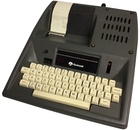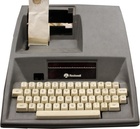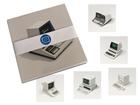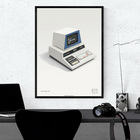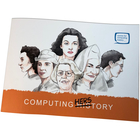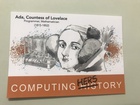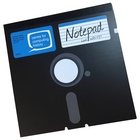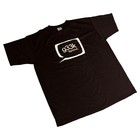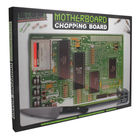Rockwell International

Rockwell International was the ultimate incarnation of a series of companies under the sphere of influence of Willard Rockwell, who had made his fortune after the invention and successful launch of a new bearing system for truck axles in 1919.
Primary among the constituents of the final company were the Rockwell Spring and Axle Company (itself a merger of a number of automotive suppliers), which formed into Rockwell-Standard, then merged with North American Aviation to form North American Rockwell in 1967. They then purchased or merged with Miehle-Goss-Dexter, the largest supplier of printing presses, and Collins Radio, a major avionics supplier. Finally they merged with Rockwell Manufacturing, run by Willard Rockwell Jr., and formed Rockwell International in 1973.
In this time the various companies in the empire list a huge number of firsts. North American was responsible for the famous WWII P-51 Mustang fighter and Korean War-era F-86 Sabre, as well as the Apollo spacecraft. Once under the Rockwell banner they continued on to build the B-1 Lancer bomber, the Space Shuttle, (started while they were still North American) and most of the Navstar Global Positioning System satellites. Rocketdyne, who had been spun off by North American in 1955 was re-merged in 1984, and by this point produced most of the rocket engines used in the US. Rockwell also took over and manufactured the light business aircraft previously known as Aero Commanders, then introduced their own new design as the Rockwell Commander 112 and 114.
North American had developed a desktop calculator based on a MOSFET chip for use by its legions of engineers. In 1967 Rockwell set up their own manufacturing plant to produce them, starting what would become Rockwell Semiconductor. One of their major successes came in the early 1990s when they introduced the first low-cost 14.4 kbit/s modem chip set, which was used in a huge number of modems.
Collins Radios were fitted to 80% of the free world's airliners. They designed and built the radios that communicated the Apollo moon landings and the high frequency radio network that allows worldwide communication with US military aircraft. Rockwell designed and built the third stage of the Minuteman Intercontinental ballistic missile, (ICBM) and the AIRS inertial guidance system (INS) that provided its navigation. They also built inertial navigation systems for the Fleet Ballistic Missile submarines.
Rockwell's manufacturing was likewise strong and built most of the heavy duty truck axles in the US.
With the death of Willard Rockwell in 1978 and the stepping down of Willard Rockwell Jr. in 1979, the company started a long series of spin-offs. The company sold the most of its defense and all of its space business to Boeing Integrated Defense Systems, including Rocketdyne in December, 1996. The company began to spin off its semiconductor manufacturing as Conexant, additionally spinning-off the automotive and truck business as Meritor, which then merged with Arvin Industries to form Arvin Meritor; the remainder of the company finally split into two totally separate companies: Rockwell Collins, (COL), and Rockwell Automation, (ROK). As such, Rockwell International no longer exists.


